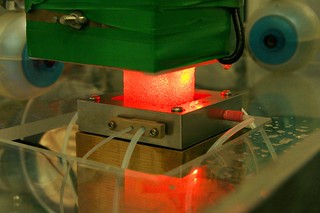
PREV ARTICLE
NEXT ARTICLE
FULL ISSUE
PREV FULL ISSUE
ICE CORES, LEAD PRODUCTION, AND ROMAN COINAGEJohn Kraljevich forwarded this fascinating New York Times story that connects the Greenland icepack with coinage of the Roman Empire. Thanks! -Editor
The record is written not in Latin but in lead. Lead emissions generated by mining operations in Northern Europe reached Greenland and were washed down in snowfall. The snow accumulated, turned into ice, and preserved a record that stretches back thousands of years. Ice cores from Greenland have long been used to track global climate change, which is recorded in the frozen water’s oxygen isotopes. The project to measure ancient lead emissions in ice cores was initiated by Andrew I. Wilson, an archaeologist at the University of Oxford who studies the Roman economy. The dates of these ice years were verified by synchronizing them with other chronologies, such as those derived from tree rings and volcanic eruptions. The continuous record of lead pollution is not as good as having figures for Roman gross domestic product, which no one knows, but it does seem to reflect the general economic health of the Roman state. Lead was widely used in the Roman economy for making water pipes and sheathing the hulls of boats. Its production was also a proxy for a central economic activity, the use of silver in the Romans’ standard silver coin, the denarius. Silver occurs in lead ores, and the process of separating the silver from lead at high temperatures was a major source of airborne lead. In the early Roman Empire the denarius was 100 percent silver. But under the emperor Nero, starting in 64 A.D., the proportion of silver was reduced to 80 percent and the state made a tidy profit by recycling the all-silver denarii into debased ones. These changes coincided with, and perhaps were caused by, a drop in silver production, and just such a fall in lead emissions is recorded in the Greenland ice core shortly after 60 A.D. Under the emperor Trajan there was a brief return from 103 to 107 A.D. to making coins from newly mined silver and this historical event too is reflected in a brief spike of lead pollution that ends in 107 A.D. Lead emissions, as reflected in the ice core, dropped to an absolute low during the Imperial Crisis of 235 to 284 A.D., when the empire nearly collapsed under the stresses of internal discord, barbarian invasions and the Cyprian plague. Thereafter the economy, to judge by lead levels, recovered a little but entered a final period of decline marked by the withdrawal of Roman legions from Britain in the early 5th century A.D. and the collapse of the western Roman Empire in 476 A.D. To read the complete article, see: Wayne Homren, Editor The Numismatic Bibliomania Society is a non-profit organization promoting numismatic literature. See our web site at coinbooks.org. To submit items for publication in The E-Sylum, write to the Editor at this address: whomren@gmail.com To subscribe go to: https://my.binhost.com/lists/listinfo/esylum All Rights Reserved. NBS Home Page Contact the NBS webmaster 
|
